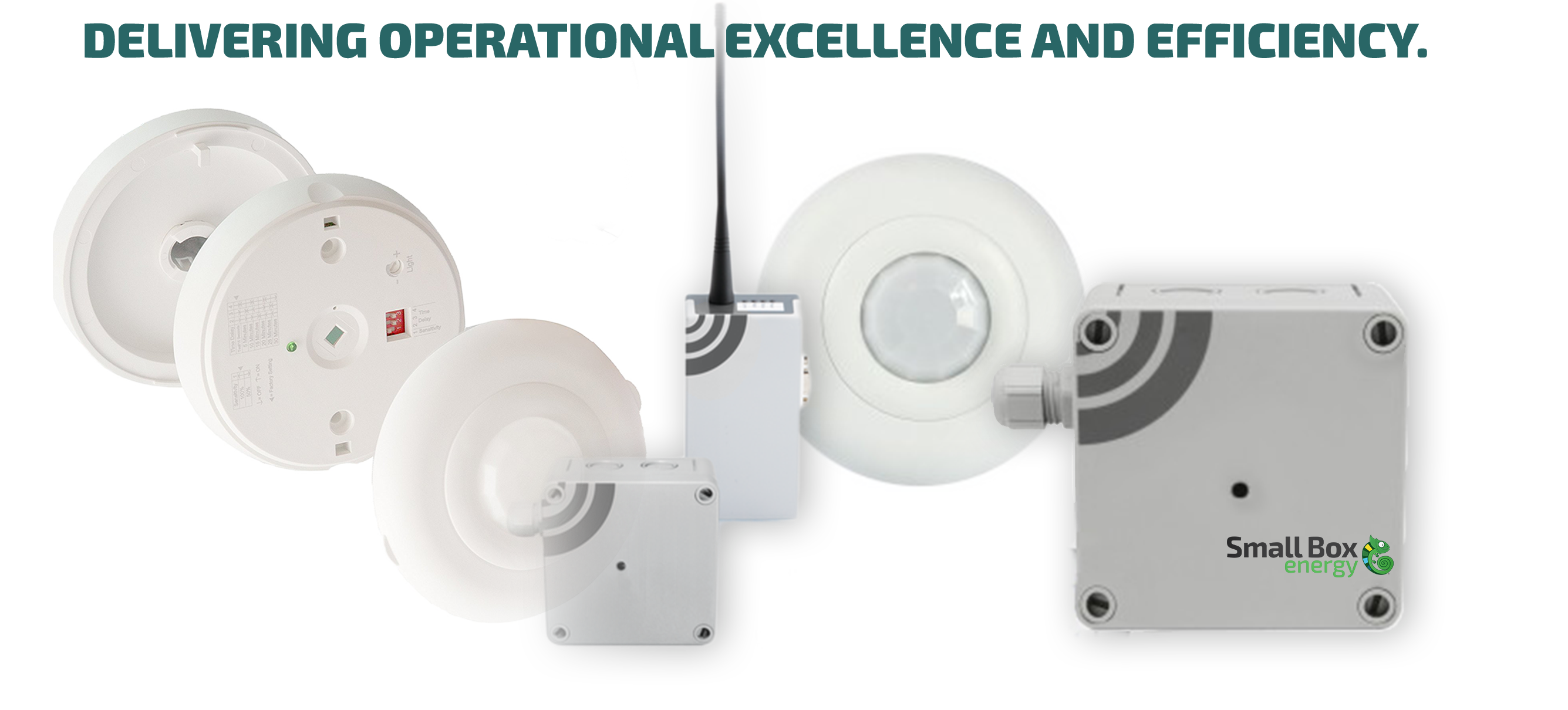
The News!
This week Small Box Energy announced new features for chameleon™ 2.0, hot water temperature monitoring and alarming and occupancy controlled lighting. These two features, driven by customer requests, add capabilities to help owners improve their visibility into operations and further reduce the risk of something critical going wrong. They’re a great addition to the award winning building automation/energy management system and here’s why!
Recently demand has risen for restaurant and convenience store owners to be routinely aware of the temperature of the water coming out of sinks and  dishwashers and dishwashing units. Health codes mandate the temperature of the water coming out of handwashing sinks be 120 degrees and water at dish machines to be 140 degrees. How can you really know what the temperature is, other than the setting on the hot water heater…which could be faulty? Small Box Energy’s water heater sensor measures and records temperatures of the water every minute. The consistent temperature monitoring allows for notifications to be sent whenever the temperature goes above or below a selected range.
dishwashers and dishwashing units. Health codes mandate the temperature of the water coming out of handwashing sinks be 120 degrees and water at dish machines to be 140 degrees. How can you really know what the temperature is, other than the setting on the hot water heater…which could be faulty? Small Box Energy’s water heater sensor measures and records temperatures of the water every minute. The consistent temperature monitoring allows for notifications to be sent whenever the temperature goes above or below a selected range.
 Deliveries happen at night and lights need to be ON during the delivery times. Rather than keeping lights on all the time or relying on someone who might be preoccupied with customers to manually override a lighting schedule, this solution allowed lights to turn on automatically when someone enters the area. This solution also addresses the need for lights to be temporarily turned on for other activities, like cleaning after hours, assuring they will be automatically turned off when no longer needed. This minimizes the amount of energy used by only turning on the lights when someone is present.
Deliveries happen at night and lights need to be ON during the delivery times. Rather than keeping lights on all the time or relying on someone who might be preoccupied with customers to manually override a lighting schedule, this solution allowed lights to turn on automatically when someone enters the area. This solution also addresses the need for lights to be temporarily turned on for other activities, like cleaning after hours, assuring they will be automatically turned off when no longer needed. This minimizes the amount of energy used by only turning on the lights when someone is present.
chameleon’s hot water temperature monitoring uses a sensor to measure the temperature of a restaurant or convenience store’s water at the output of the hot water heater. To achieve this function two devices are needed. A temperature sensor to read the temperature of the water coming from the water heater and a communication device to transmit the information back to the system for recording. The temperature sensor that Small Box Energy uses is a sensor that straps directly onto the copper water pipe of the hot water heater and is physically wired to the communication device. The communication device, in this case, communicates back to the chameleon programmable web server wirelessly.
Occupancy controlled lighting uses a sensor to detect motion in a lighting zone and override the lights to ON. This sensor can override current lighting schedules to turn on the desired zone by interrupting the signal coming from the Small Box Energy I/0 controller with a set of relays held inside of the Occupancy sensor. The occupancy sensor itself can be mounted in the ceiling near the desired location to give maximum coverage of the area. It uses PIR or Passive Infrared technology, to measure infrared (IR) light radiating from objects in its field of view. It has a 360-degree field of view with up to an 800 ft range.
The occupancy sensor cuts down on the amount of energy used by only turning on the lights when someone is present then turning them off automatically. Typically occupancy sensors are installed to eliminate the problem of lights being left on. What we typically see is the lights being left on by an employee who simply forgot to turn them off, and honestly who hasn’t been there? The hot water sensor directly reduces the amount of energy consumed as well, in most cases, we will see overheating of the water which causes money spent on warming the water for no reason. These two solutions are one of the many options Small Box Energy has to offer. The great thing about the chameleon platform is that once you have a base system in, it changes and molds to your business model. Hence the name! Chameleons blend in….just as we blend into your business while enhancing your visibility and operational efficiency.